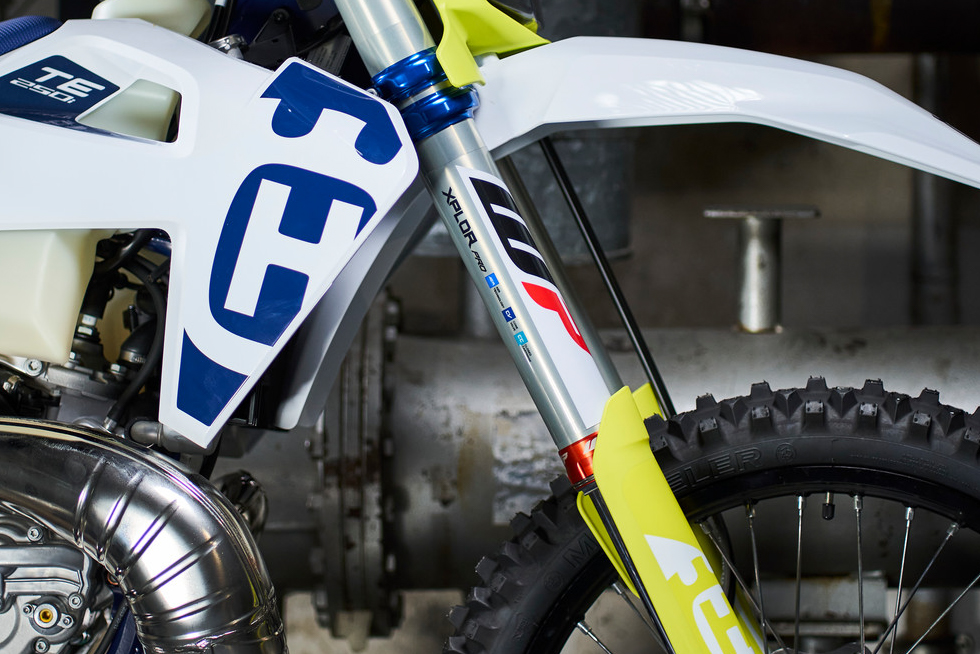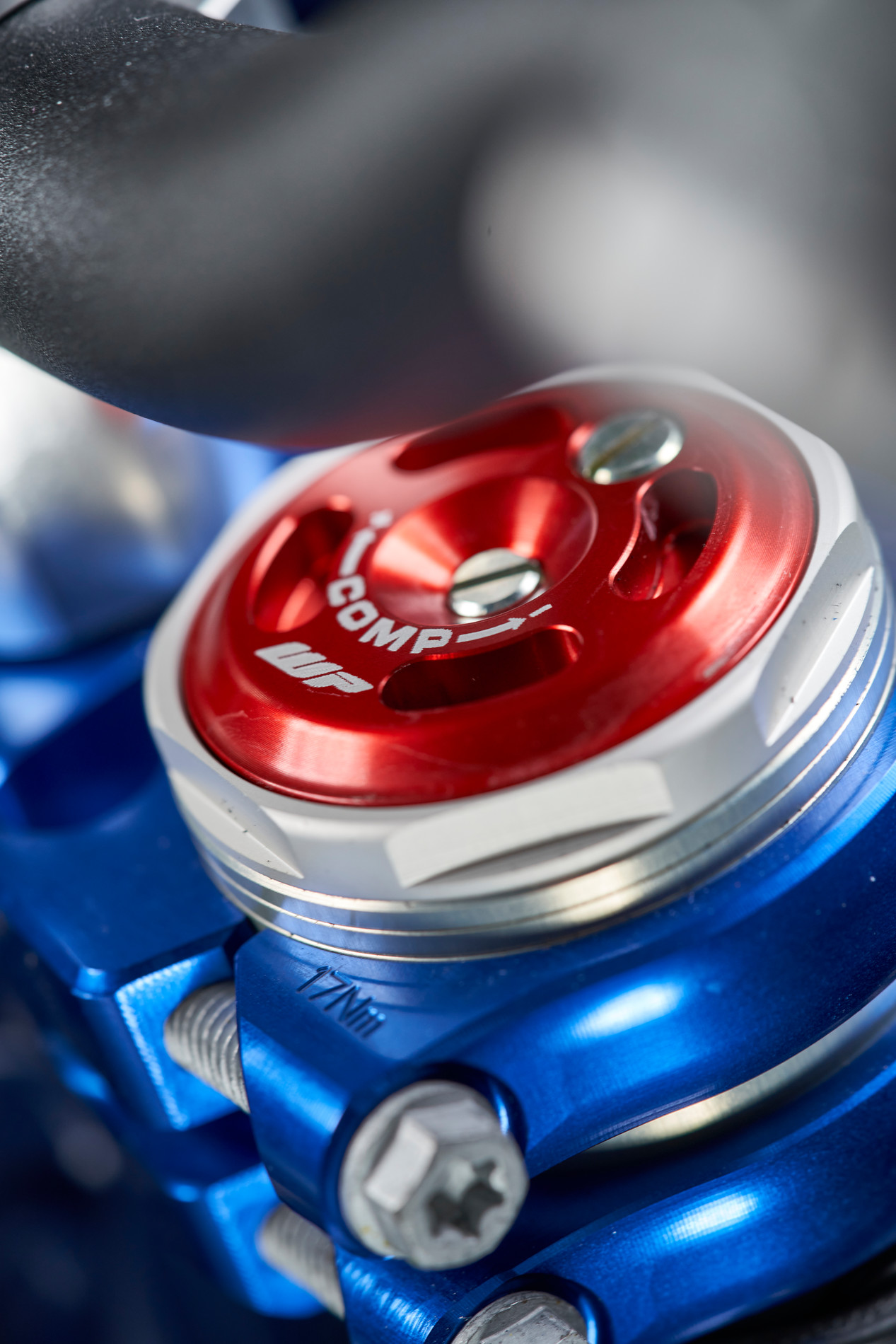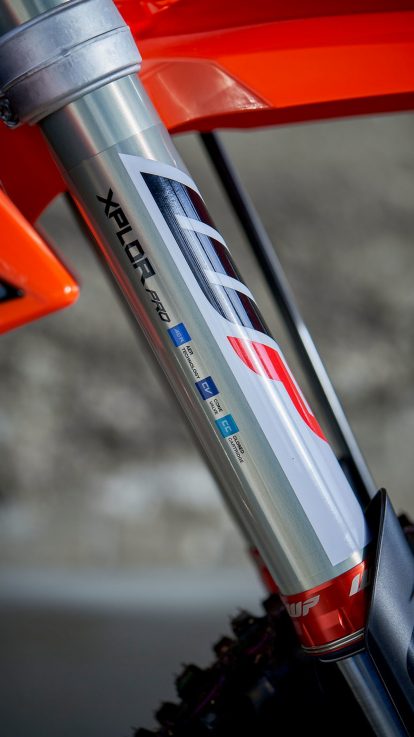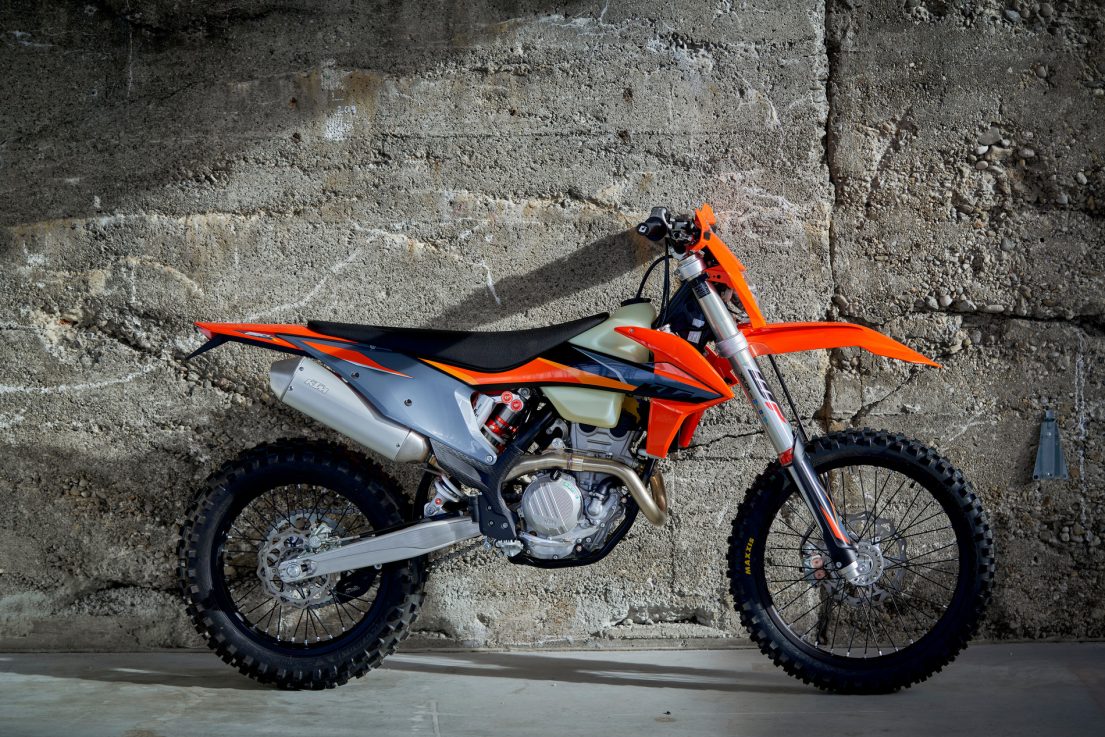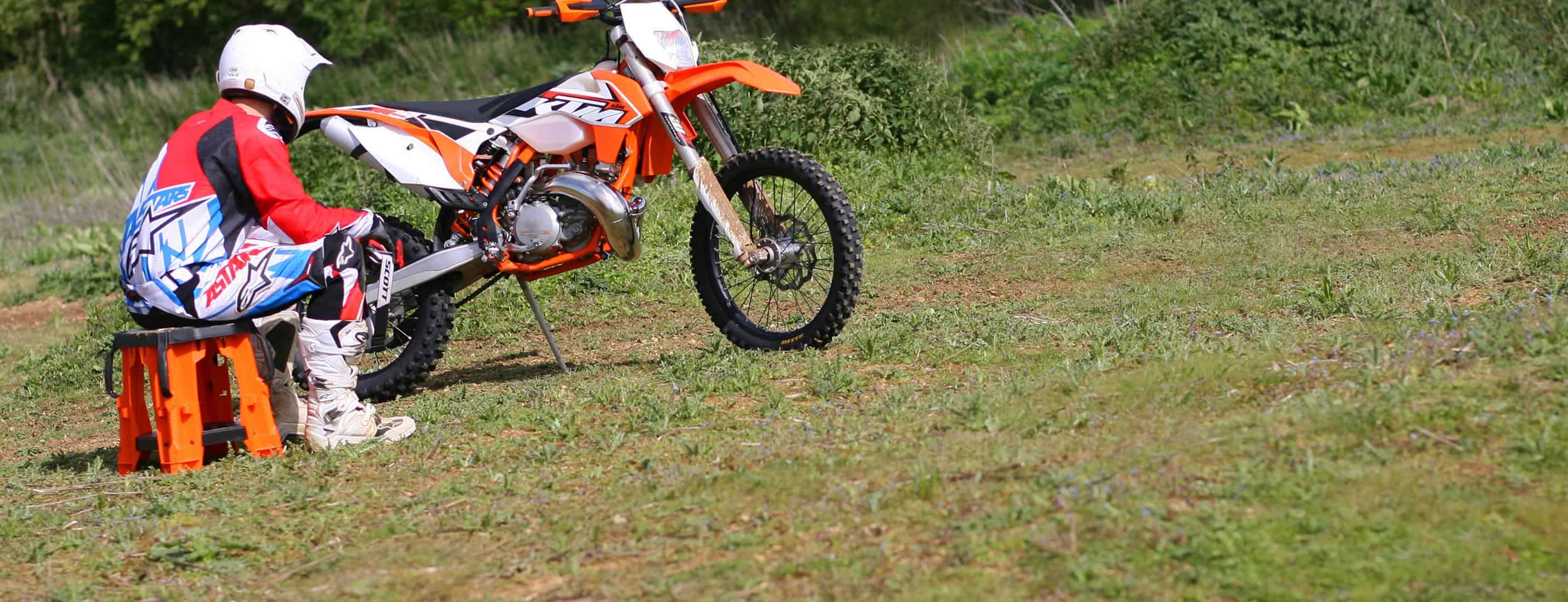THE NEW XPLOR PRO 7448 AIR FORK
WP Suspension has announced the launch of a new set of forks made specifically for enduro: the WP XPLOR PRO 7448 Air Fork. The air fork brings the benefit of a substantial weight saving (around 1kg), instant adjustability on spring rate, plus simplification in the design and engineering.
While utilising the technology already found in recent OEM air forks in the Austrian motocross ranges, these forks are unique with specific design features and valving to suit enduro, as tested by WP in world championship competition. The 7448 is even a step-up from the fork found on the super-trick 2021 KTM 350 EXC-F WESS. That bike’s air fork features conventional shim-stack damping, whereas this new fork adopts WP’s gold-standard Cone Valve technology.
WP identify this fork as a split system, equipped with a combination of WP AER TECHNOLOGY in one leg, and CONE VALVE TECHNOLOGY within a CLOSED CARTRIDGE damping system in the other leg. WP has cleverly constructed two separate single cartridges here, which makes on-the-fly tuning super-easy.
UNDERSTANDING THE WP XPLOR PRO 7448 AIR FORK
How does the air fork work? We spoke to WP’s UK-based tech Gareth Edmunds to see if we could break it down into simple words (for our simple minds). It goes something like this:
Left leg (ie brake side):
This is the AER fork leg. The air in the fork replaces the conventional coil spring. You have the air (contained in a closed cartridge) in this leg – and little else (ie. no conventional oil damping systems). By adjusting the air pressure (typically between say 130 and 160psi) you can adjust the spring rate (as we know it) to suit your weight and ride preferences. Less pressure simulates a soft spring, then add more pressure for a harder spring. The benefit here is tuning can be done in seconds using a pump, rather than the messy time-consuming job of extracting the spring and replacing it.
To give you a little more detail… the air in the cartridge sits on either side of a separation piston which is located on top of the fork’s piston rod. As the fork compresses the piston is forced up by the piston rod, meaning the air pressure on the top of the piston increases. This is due to the air being squeezed into a smaller volume (positive pressure). The pressure on the lower side of the piston decreases as it has now a larger volume (negative pressure). When the fork has stopped compressing the positive pressure pushes the piston and piston rod backwards allowing the fork to return to its fully extended length. To ensure the pressure is equalised on both sides of the piston there is a small bypass valve at the point the piston stops in its fully extension state. Incidentally, this cartridge sits within an outer chamber which contains a modest amount of oil to provide the necessary lubrication for the fork leg to move within the fork slider.
Right leg:
This leg is much like a conventional oil and spring fork leg – only without the spring. While the air leg is primarily sorting the spring rate, this leg is dealing solely with the compression and rebound damping. Only it’s a posh fork as it features CONE VALVE damping technology, which keen race followers will know is what the top pro’s insist on for its superior race-winning performance. Damping adjustment on this fork leg is entirely conventional with screw-type adjusters on the top and bottom of the fork.
Combined:
Just to be crystal: as we know from fork systems where compression and rebound damping are split into separate legs, by virtue of the fixed points at the fork clamps and axle clamps, the two systems are unified and so the effects of the air springing and oil damping are combined into one smooth action.
DO I NEED THIS FORK?
Perhaps the first question is: do I have the £2756.66 this fork costs? It’s not cheap, but as the name indicates this is PRO spec kit, it’s intended for top performers who need every last advantage they can get. Up until now the pro’s go-to has the been the XPLOR PRO 7548 – aka Cone Valve forks – exactly as the works enduro teams have been using. The XPLOR PRO 7448 brings all the benefits of that fork (Cone Valve + Closed Cartridge) and adds the air spring (AER) – and in so doing brings that all important 1kg (thereabouts) weight saving, plus super-quick spring rate adjustability. Most probably it’s that kilo saving that’s going to be valued the most – and perhaps most by the extreme enduro racers who are always looking to pop that front wheel over the next obstacle (a thousand times a day…). By the way, the two products are the same price.
WILL WE SEE AIR FORKS ON PRODUCTION ENDUROS?
Well, this is crystal ball stuff. But enduro is a competitive world and if you’re not using the latest tech then you’re obviously prepared to lose. So yes would seem the answer here, maybe even by 2022. Cost of production shouldn’t be a major factor. Reliability looks to have been sorted, too – as it’s a closed cartridge system, failure seems very unlikely. But if you’re asking us – yes, expect to see air forks becoming the OEM fitment, only with conventional shim valves, the Cone Valves being reserved for the platinum card carrying customer!
AND WHAT ABOUT A TEST?
Yes again; thanks to WP’s generosity, RUST will be testing these forks on our long term KTMs and Huskies, so we’ll be able to feed back on their performance pretty soon.
AVAILABILITY
The XPLOR PRO 7448 Air Fork will be available from March 5th for said £2,756.66 (including VAT).
The XPLOR PRO 7448 Air Fork will be available for the following motorcycles:
KTM: EXC (150, 250, 300); EXC-F (250, 350, 450, 500). From 2017-
Husqvarna: TE (150, 250, 300); FE (250, 350, 450, 501). From 2017-
GASGAS: EC (250, 300); EC-F (250, 350); 2021
For more detailed information visit your nearest WP AUTHORISED CENTRE or go to www.wp-suspension.com

